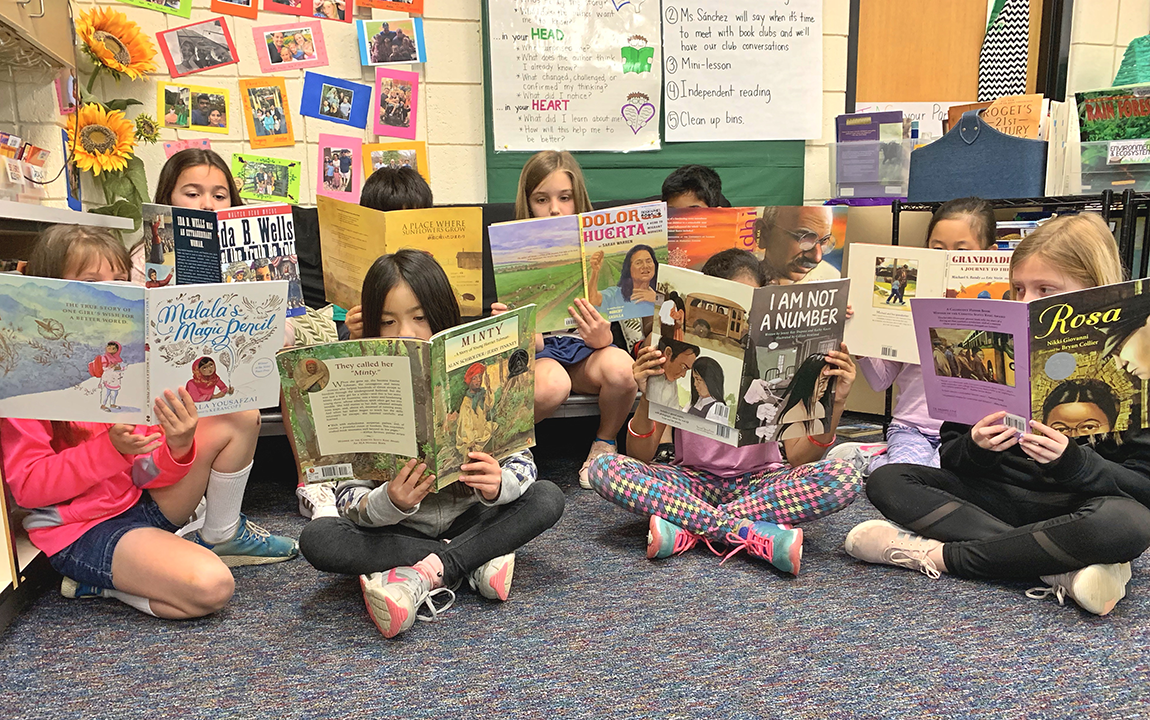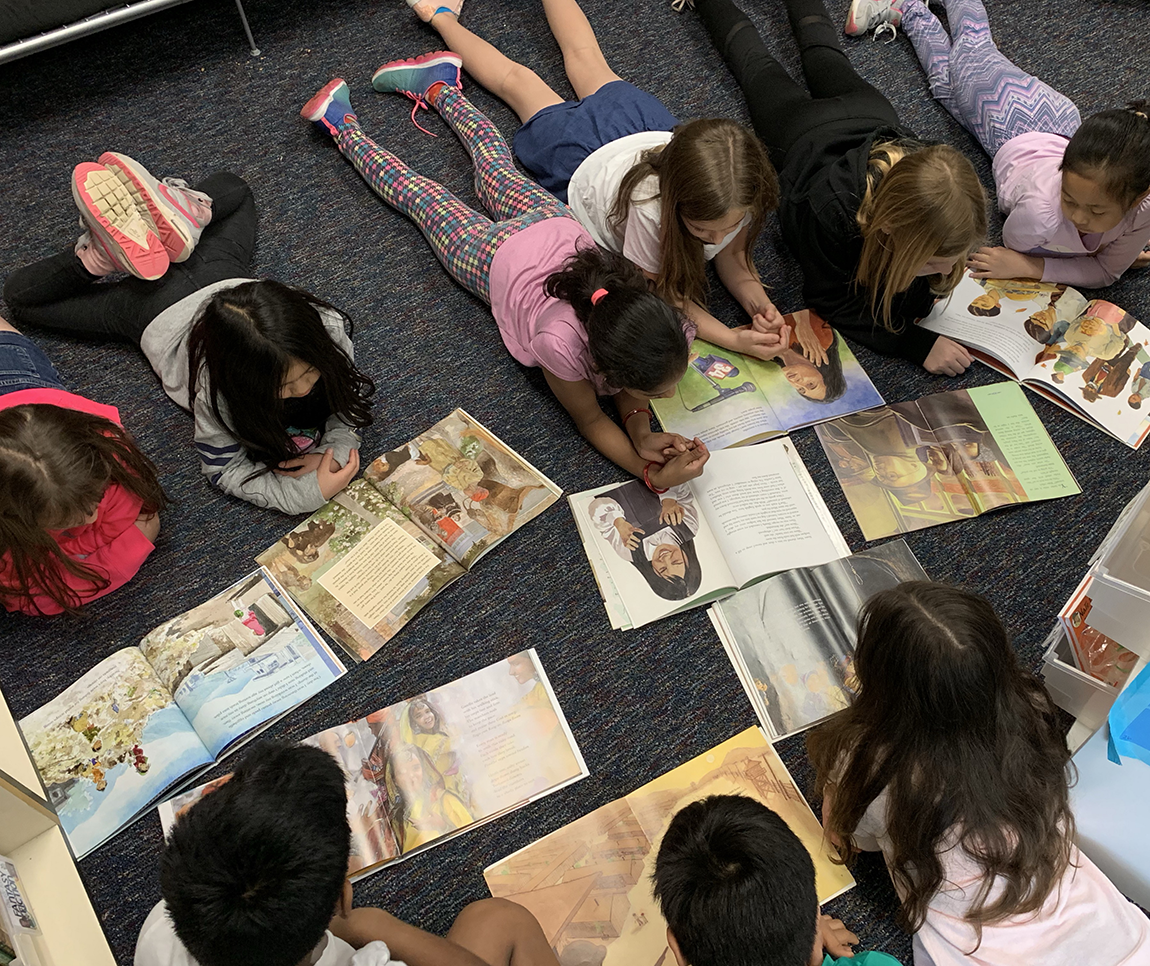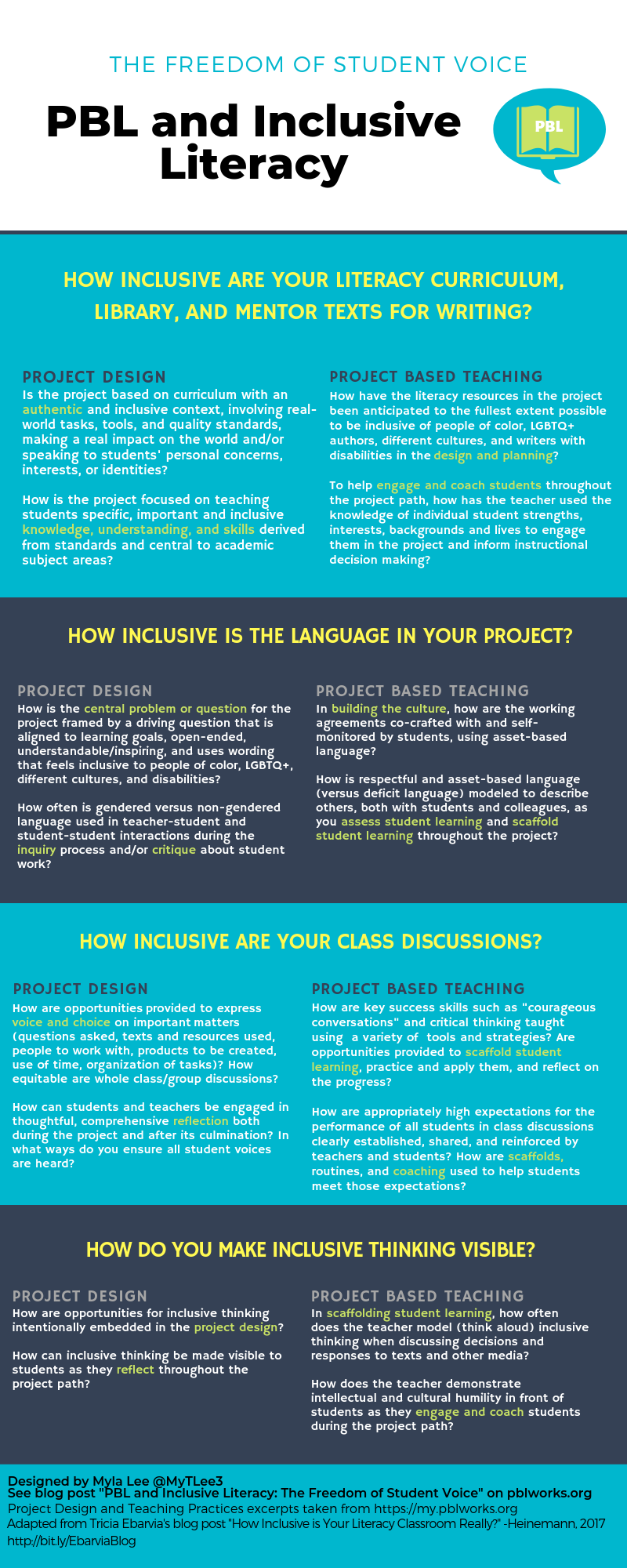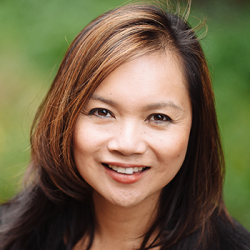
I recently asked Tricia Ebarvia, high school English teacher and co-founder of the #DisruptTexts movement, “What is student voice?”, a question often posed to me by teachers. This was her response:
Her words gave me pause. How can student voice not be safe? Yet, for many students, it’s true. They walk two paths. In order to keep safe and hidden, they find themselves code switching from their identity to what the dominant society expects to see.
So how can we create a Project Based Learning culture and instruction that is inclusive to ALL learners? How can we provide equitable structures so that ALL voices are heard? How can we ground our PBL instruction in inclusive practices?
“Inclusive practices” are those that guarantee the perspectives and contributions of all people are given equal recognition, attention, and care in all learning environments—especially those of diverse backgrounds who have been traditionally marginalized, such as LGBTQ+ individuals, people with physical/mental disabilities, and people of color. How can we start this journey of freedom in Project Based Learning? How can we help change the narrative for hidden voices? One answer is literacy, a fundamental right of all learners.

Literature: Affirming Identities
In her 1990 essay, “Mirror, Windows, and Sliding Glass Doors,” Dr. Rudine Sims Bishop explains how literature can be the vehicle for equity for our students. Books are sometimes mirrors to see a reflection of their own lives through the human experience of others.
However, what if the books on our bookshelves don’t reflect the identities in our classrooms? What if the only images our students see do not reflect who they are, or are distorted, negative, or stereotypical? What lessons are students learning when they aren’t able to say, “I see me” in the pages of a book? According to Dr. Sims Bishop, children “learn a powerful lesson about how they are devalued in the society of which they are a part.” For our minoritized students, books as mirrors help free their voice.
Books are also windows for students into other cultures and people different from themselves. Learning about the world invites comparison and different perspectives of what cultures value as important. For predominantly white communities, Tricia reminds us that “it’s important for students in those classrooms to be introduced to the literary legacies of people of color. There are too many negative deficit models of how people of color learn.” This could also be said about other groups such as those labeled based on disabilities or by gender. Students with dominant identities need windows into other communities as part of their own liberating education.
Let’s Look at Your Literacy Classroom: Inclusive or Not?
Asking tough questions of ourselves is not always comfortable, especially when the topic of equity is the core of the discussion. We’re asking educators to go beyond the scope of their teaching careers, to the very early experiences that may have led to biases and prejudices that have affected and, according to Tricia, infected our teaching practices.
Take a moment to reflect on these eight questions by Tricia from her blog post, “How Inclusive Is Your Literacy Classroom Really?” These questions have changed how I view the literature on my bookshelves. What feelings come up as you respond? Are you finding yourself defensive? Tricia encourages teachers to “step into whatever discomfort you might feel, and ask yourself, honestly, why you’re feeling that way” and cautions against reducing these questions to a mere checklist to be marked “done.” This crosswalk between six of the inclusive questions and the Project Design Rubric and Project Based Teaching Rubric (shown below) may help you think more about creating a more inclusive PBL and literacy culture.
Disrupting Text
Now that you’ve taken a closer look at your inclusive practices and library, you might be asking “What’s next?” According to Tricia and the other co-founders of the #DisruptText movement, we need to “disrupt” the narratives of systematic inequalities found in our curricula and teaching methods. In 2018 they began the hashtag #DisruptTexts to focus on the perspectives of marginalized voices in student literature. Two main levers of disruption are the diversity of the texts chosen and the critical pedagogy used to guide students’ engagement with the texts. Replacing current texts to make space for the “rich literary & intellectual history of people of color and other marginalized groups” may not always be possible. That is when critically thinking about the texts that exist in our curriculum is essential. To help guide book discussions, the movement’s founders remind educators to think and engage students in discussions about the following questions:
- In what ways might a text present problems related to equity and representation?
- How do the disruptive texts and multimedia stand with or against the traditionally taught text?
Exploring websites like We Need Diverse Books, Social Justice Books, and Teaching Tolerance, following the hashtag #DisruptText, or joining twitter chats on this topic are ways to build your library and lessons of disruptive texts.
Transforming Perspective in PBL with Inclusive Text
By integrating disruptive text, this year’s third grade social studies Project Based Learning unit by my colleagues Alexandra Sanchez and Bridget Zahradnik pushed to change the narrative of Michigan economic growth from statehood to present day. One of their content standards focused on understanding how diverse people were affected by the economic growth. Alexandra aligned picture books representing the voices of those marginalized during that time period. The driving question was, “How have diverse groups resisted injustices throughout Michigan’s economic growth?” Through literature discussions, students identified the traits of change agents such as Cesar Chavez, Martin Luther King, and Gandhi in each picture book, eventually connecting to those same qualities in themselves. The final group product was a presentation to an audience of community members about how they could resist specific injustices happening today.
To spark some ideas (even though they aren’t PBL units) for projects that connect to students’ identities, check out the ideas shared by 44 teachers in the article, “When School Gets Real: Teachers Connect Classroom Lessons to Current Events.”
The First Step
This inclusive literacy journey begins with you, me, and other educators becoming aware of our own identity and asking ourselves what experiences have shaped and limited OUR ideas about race, culture, gender, disabilities, and power. Only after we do our own internal work, emotionally and intellectually, can we begin to make the necessary changes to create student voice. Freedom.


